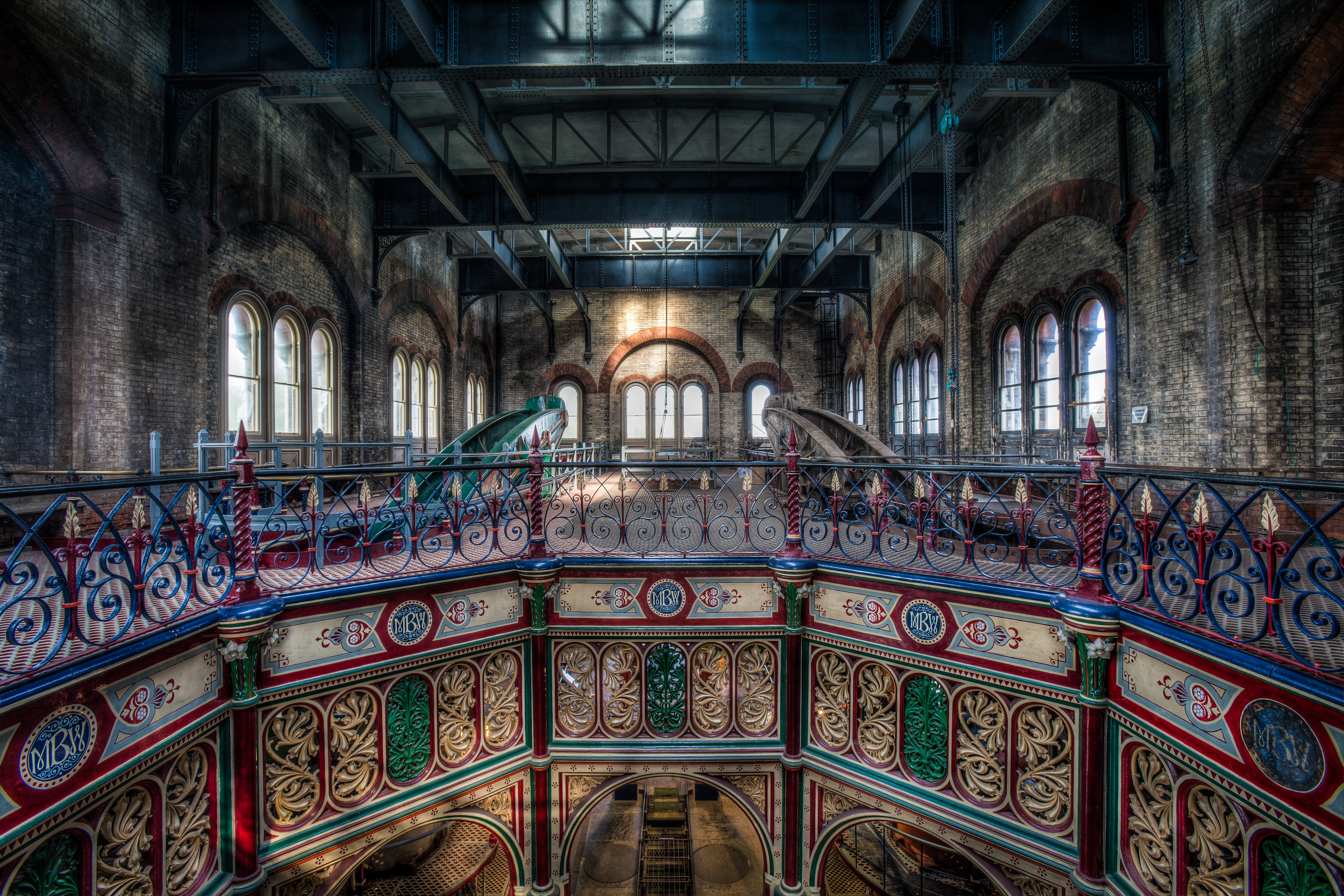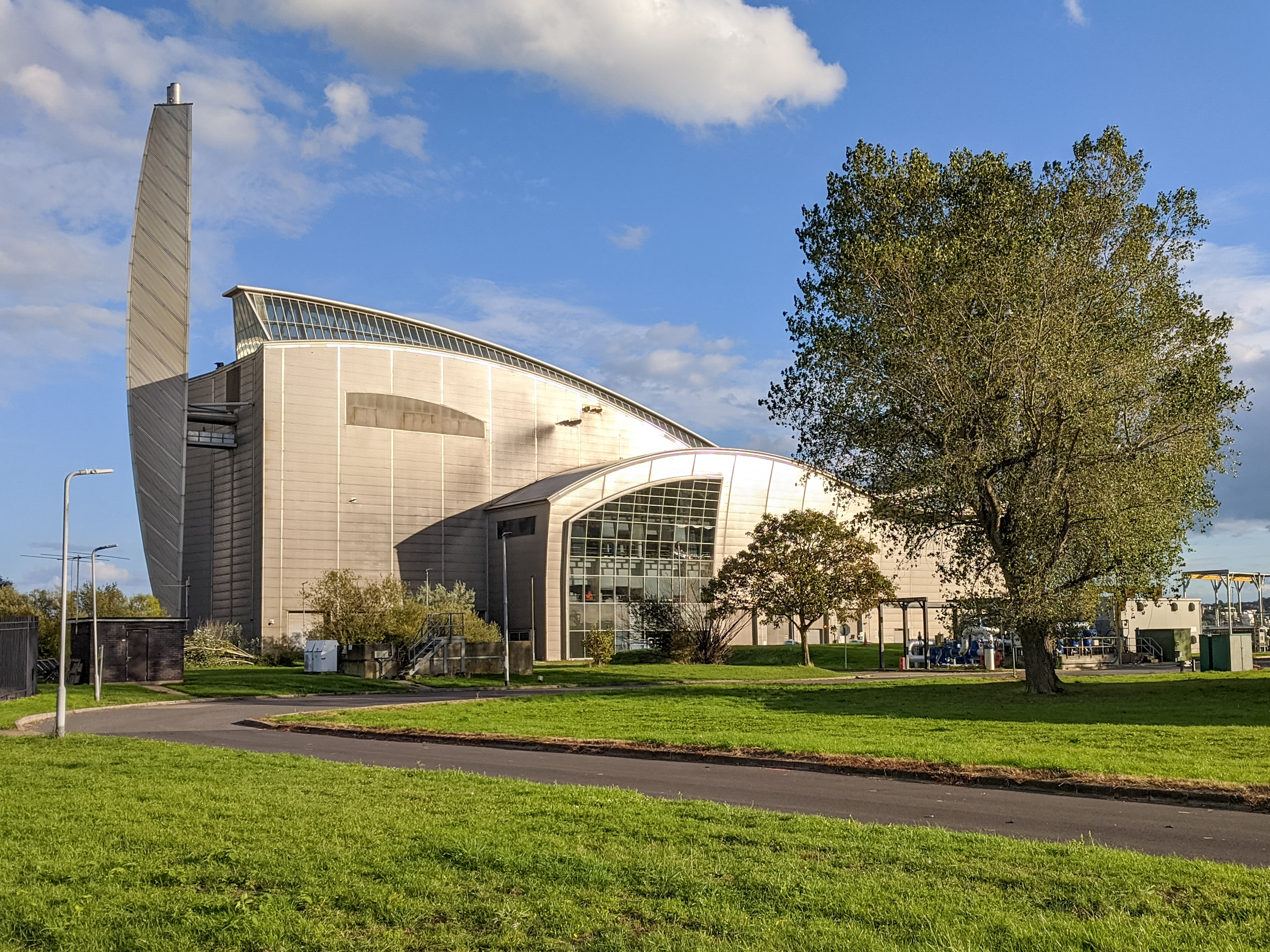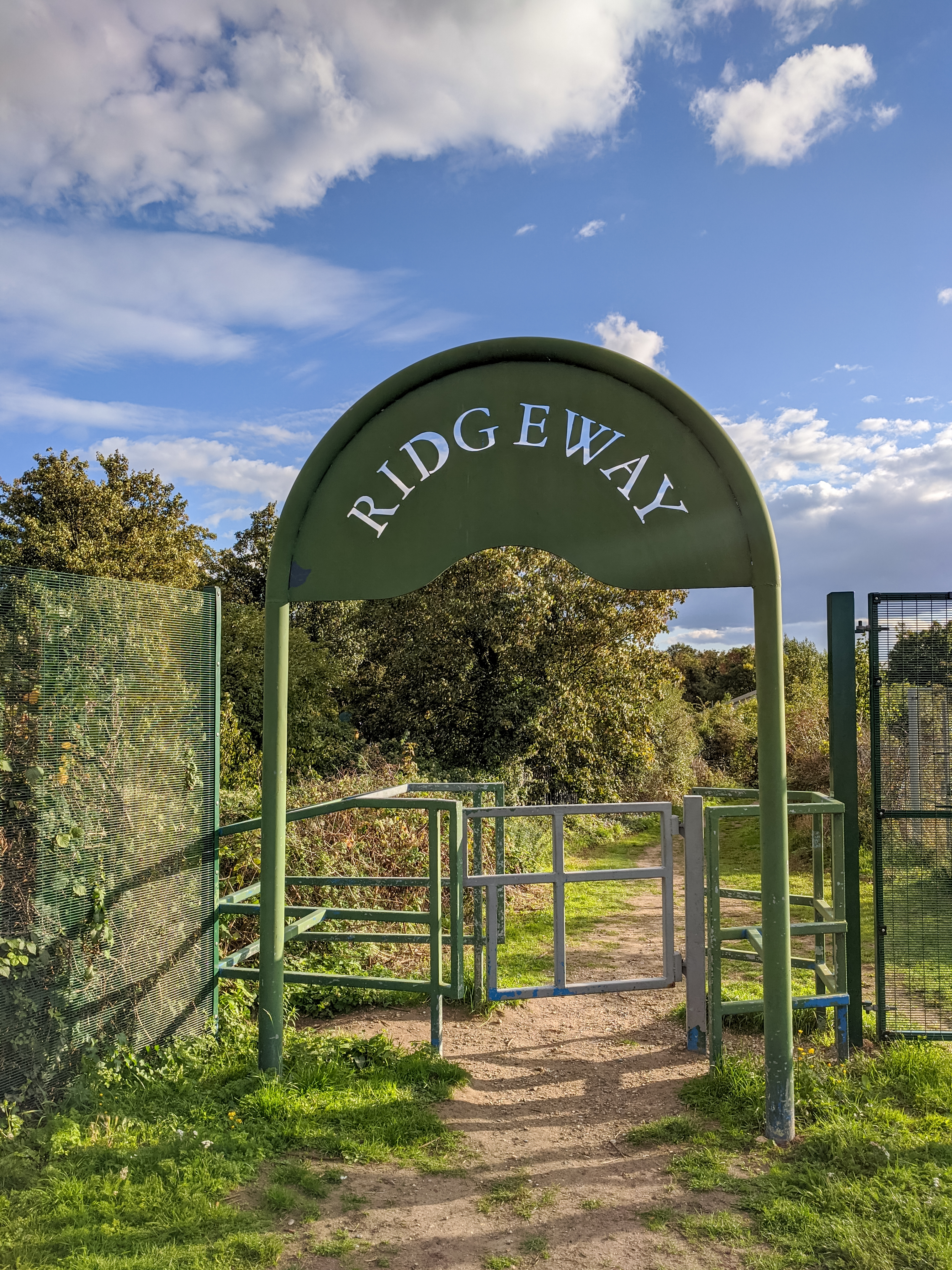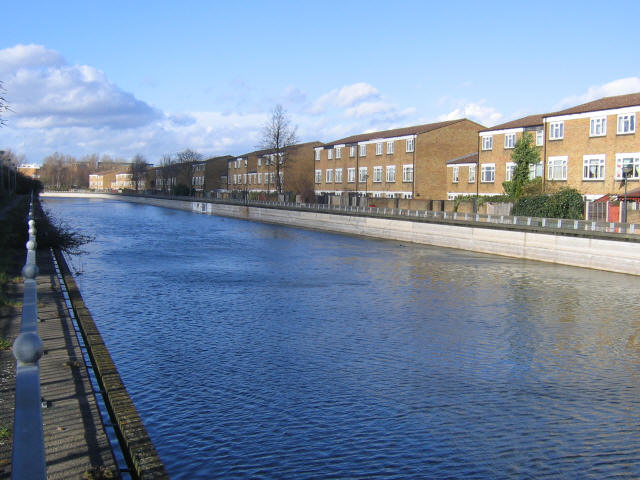|
Crossness
Crossness is a location in the London Borough of Bexley, close to the southern bank of the River Thames, to the east of Thamesmead, west of Belvedere and north-west of Erith. The place takes its name from Cross Ness, a specific promontory on the southern bank of the River Thames. In maritime terms, the tip of Cross Ness, in the past referred to as 'Leather Bottle Point', marks the boundary between Barking Reach and Halfway Reach. An unmanned lighthouse on Crossness is a navigational aid to shipping. Sewer Crossness is the location of the Crossness Sewage Treatment Works, which includes the historic Victorian Crossness Pumping Station, built at the eastern end of the Southern Outfall Sewer as part of the London sewerage system designed by Sir Joseph Bazalgette and constructed between 1859 and 1865. Lighthouse Crossness lighthouse is a steel lattice structure. The light is at an elevation of 41 feet (12.5 m) and gives a white 5-second flash visible for 8 miles (12.9 km). ... [...More Info...] [...Related Items...] OR: [Wikipedia] [Google] [Baidu] |
Crossness Pumping Station
The Crossness Pumping Station is a former sewage pumping station designed by the Metropolitan Board of Works's chief engineer Sir Joseph Bazalgette and architect Charles Henry Driver. It is located at Crossness Sewage Treatment Works, at the eastern end of the Southern Outfall Sewer and the Ridgeway path in the London Borough of Bexley. Constructed between 1859 and 1865 by William Webster, as part of Bazalgette's redevelopment of the London sewerage system, it features spectacular ornamental cast ironwork, that Nikolaus Pevsner described as "a masterpiece of engineering – a Victorian cathedral of ironwork". It is adjacent to Erith Marshes, a grazing marsh, the northern part of which is designated as Crossness Nature Reserve. This provides a valuable habitat for creatures ranging from moths to small amphibians and water voles. Opening The Southern Outfall Works, as the complex was originally called, was officially opened on 4 April 1865, by Edward, Prince of Wales, attende ... [...More Info...] [...Related Items...] OR: [Wikipedia] [Google] [Baidu] |
Crossness Sewage Treatment Works
The Crossness Sewage Treatment Works is a sewage treatment plant located at Crossness in the London Borough of Greenwich. It was opened in 1865 and is Europe's second largest sewage treatment works, after its counterpart Beckton Sewage Treatment Works located north of the river. Crossness treats the waste water from the Southern Outfall Sewer serving South and South East London, and is operated by Thames Water. The treated effluent from the plant is discharged into the River Thames at the eastern end of the site. History As originally conceived the works comprised reservoirs covering 2.6 hectares designed to retain six hours’ flow of sewage. No sewage treatment was provided and the sewage was discharged untreated into the River Thames on the ebb tide. Following the ''Princess Alice'' disaster in 1878 a Royal Commission was appointed in 1882 to examine Metropolitan Sewage Disposal. It recommended that a precipitation process should be deployed to separate solids from the liqu ... [...More Info...] [...Related Items...] OR: [Wikipedia] [Google] [Baidu] |
Crossness Nature Reserve
Crossness Nature Reserve is a 25.5 hectare local nature reserve in Crossness in the London Borough of Bexley. It is part of the Erith Marshes Site of Metropolitan Importance for Nature Conservation. The site is next to Crossness Sewage Works, and is owned and managed by Thames Water Thames Water Utilities Ltd, known as Thames Water, is a large private utility company responsible for the public water supply and waste water treatment in most of Greater London, Luton, the Thames Valley, Surrey, Gloucestershire, north Wiltsh .... Crossness is part of the original Thames floodplain called Erith Marshes. It is one of the few remaining areas of grazing marsh in London, and it has the largest reedbeds in Bexley. It also has ponds and ditches, and areas of scrub and rough grassland. It is a major site for water voles, and 130 species of birds have been recorded, together with some rare invertebrates, including five species of water beetles. Scarce plants include knotted-hedge parsl ... [...More Info...] [...Related Items...] OR: [Wikipedia] [Google] [Baidu] |
Joseph Bazalgette
Sir Joseph William Bazalgette CB (; 28 March 181915 March 1891) was a 19th-century English civil engineer. As chief engineer of London's Metropolitan Board of Works, his major achievement was the creation (in response to the Great Stink of 1858) of a sewerage system for central London which was instrumental in relieving the city from cholera epidemics, while beginning to clean the River Thames. He was also the designer of Hammersmith Bridge. Early life Bazalgette was born in Hill Lodge, Clay Hill, Enfield, London, the son of Joseph William Bazalgette (1783–1849), a retired Royal Navy captain, and Theresa Philo, born Pilton (1796–1850), and was the grandson of a French Protestant immigrant who had become wealthy. In 1827, when Joseph was eight years old, the family moved into a newly-built house in Hamilton Terrace, St. John's Wood, London. He spent his early career articled to the noted engineer Sir John Macneill, working on railway projects and amassed sufficient ex ... [...More Info...] [...Related Items...] OR: [Wikipedia] [Google] [Baidu] |
Belvedere, London
Belvedere is a town in south east London, England, within the London Borough of Bexley. It lies close to the River Thames, with Erith to the east, Bexleyheath to the south, and Abbey Wood and Thamesmead to the west. Prior to the creation of Greater London in 1965, Belvedere was in the administrative county of Kent. History The area which is today known as Belvedere was for centuries part of Lessness Heath, the eastern parts of a narrow high ridge which stretches from the area of Lesnes Abbey to Erith. The northern stretch is industrial and environmental and was common meadow. In 1847 this largely uncultivated, wooded estate, almost undivided was given by operation of the will of last Lord Saye and Sele to his cousin Sir Culling Eardley, who built properties in Belvedere until his death in 1863. Eardley constructed a large wooden tower (see Belvedere (structure)) on the heath to gain views over his estate to the river Thames, giving the area its name from the Italian "b ... [...More Info...] [...Related Items...] OR: [Wikipedia] [Google] [Baidu] |
Ridgeway (London)
The Ridgeway is a "cycling permitted pedestrian priority" footpath owned by Thames Water in southeast London. It runs between Plumstead and Crossness on an embankment that covers the Joseph Bazalgette Southern Outfall Sewer. Route The Ridgeway runs ENE/WSW: the western third between Plumstead railway station and The Link community centre in Thamesmead is in the Royal Borough of Greenwich, the remainder of the path towards the Thames Path and Crossness Pumping Station is in the London Borough of Bexley. A similar path called the Greenway covers the Northern Outfall Sewer. History The sewers were installed after an outbreak of cholera in 1853 and the "Great Stink" of 1858. Development The Greenwich end of the Ridgeway was refurbished in 2010 and the Bexley end of the Ridgeway was refurbished in 2017. The Plumstead entrance to the Ridgeway was also refurbished in 2018, with public art work installed by local artist Sam Skinner and Ninth Seal. The Ridgeway is incorporated in ... [...More Info...] [...Related Items...] OR: [Wikipedia] [Google] [Baidu] |
Southern Outfall Sewer
The Southern Outfall Sewer is a major sewer taking sewage from the southern area of central London to Crossness in south-east London. Flows from three interceptory sewers combine at a pumping station in Deptford and then run under Greenwich, Woolwich, Plumstead and across Erith marshes. The Outfall Sewer was designed by Joseph Bazalgette after an outbreak of cholera in 1853 and "The Big Stink" of 1858. Work started on the sewer in 1860 and it was finally opened on 4 April 1865 by H.R.H. the Prince of Wales. Until this time, central London's drains were built primarily to cope with rain water, and the growing use of flush toilets frequently meant these became overloaded, flushing mud, shingle, sewage and industrial effluent into the River Thames. Bazalgette's London sewerage system project included the construction of intercepting sewers north and south of the Thames; the Northern Outfall Sewer diverts flows away from the Thames north of the river. South of the river, three m ... [...More Info...] [...Related Items...] OR: [Wikipedia] [Google] [Baidu] |
Thamesmead
Thamesmead is an area of south-east London, England, straddling the border between the Royal Borough of Greenwich and the London Borough of Bexley. It is located east of Charing Cross, north-east of Woolwich and west of Erith. It mainly consists of social housing built from the mid-1960s onwards on former marshland on the south bank of the River Thames. History Military use Most of the land area of Thamesmead previously formed about of the old Royal Arsenal site that extended over Plumstead Marshes and Erith Marshes. There is some evidence of prehistoric human occupation of the area: flints, animal bones and charcoal were found in bore holes around Western and Central Way in 1997 by the Museum of London Archaeological Service (MOLAS).Museum of L ... [...More Info...] [...Related Items...] OR: [Wikipedia] [Google] [Baidu] |
Mogden Sewage Treatment Works
Mogden Sewage Treatment Works is a sewage treatment plant in the Ivybridge section of Isleworth, West London, formerly known as Mogden. Built in 1931–36 by Middlesex County Council and now operated by Thames Water, it is the third largest sewage works in the United Kingdom. It treats the waste water from about 1.9 million people served by three sewers in North and West London. The plant has been extended to its geographical boundaries and is constantly being upgraded with new process, most recently in OfWat Amp6 by the Costain Atkins Joint venture who delivered 6MW of Combined Heat and Power (CHP) generation, New process air blowers for Batterys A&B and 6 new gravity sludge thickening streams. The site now covers . History The plant was built in 1931–36 for £1.7 million by Middlesex County Council, replacing 28 small sewage treatment facilities as part of the West Middlesex (Mogden-Perry Oaks) Main Drainage Scheme.Philip Howard, ''London's River'', London: Hamilton, ... [...More Info...] [...Related Items...] OR: [Wikipedia] [Google] [Baidu] |
London Sewerage System
The London sewer system is part of the water infrastructure serving London, England. The modern system was developed during the late 19th century, and as London has grown the system has been expanded. It is currently owned and operated by Thames Water and serves almost all of Greater London. History During the early 19th century the River Thames was an open sewer, with disastrous consequences for public health in London, including cholera epidemics. These were caused by enterotoxin-producing strains of the bacterium ''Vibrio cholerae''. Although the contamination of the water supply was correctly diagnosed by Dr John Snow in 1849 as the method of communication, up to the outbreak of 1866 it was believed that miasma, or bad air, was responsible. Proposals to modernise the sewerage system had been made in the early 1700s but the costs of such a project deterred progress. Further proposals followed in 1856, but were again neglected due to the costs. However, after the Great Stink ... [...More Info...] [...Related Items...] OR: [Wikipedia] [Google] [Baidu] |
London Borough Of Bexley
The London Borough of Bexley () is a London boroughs, London borough in south-east London, forming part of Outer London. It has a population of 248,287. The main settlements are Sidcup, Erith, Bexleyheath, Crayford, Welling and Old Bexley. The London Borough of Bexley is within the Thames Gateway, an area designated as a national priority for urban renewal, urban regeneration. The local authority is Bexley London Borough Council. History Prior to the 19th century the area now forming the London Borough, borough was sparsely populated: very few of the present settlements were mentioned in the Domesday Book, although the village of Old Bexley, Bexley has a charter dated 814, 814 AD.A brief history of Bexley Erith was a port on the River Thames until the 17th centur ... [...More Info...] [...Related Items...] OR: [Wikipedia] [Google] [Baidu] |
Thames Water
Thames Water Utilities Ltd, known as Thames Water, is a large private utility company responsible for the public water supply and waste water treatment in most of Greater London, Luton, the Thames Valley, Surrey, Gloucestershire, north Wiltshire, far west Kent, and some other parts of England; it has a considerable local monopoly. Thames Water is the UK's largest water and wastewater services company, and supplies of drinking water per day, and treats of wastewater per day. The area covered by Thames Water has a population of 15 million, that comprise 27% of the UK population. Thames Water is responsible for a range of water management infrastructure projects including the Thames Water Ring Main around London; the Lee Tunnel; Europe's largest wastewater treatment works and the UK's first large-scale desalination plant, both at Beckton. Thames Water awarded Bazalgette Tunnel Ltd the contract to build the £4.2 billion London Tideway Tunnel Infrastructure proposals by Thames ... [...More Info...] [...Related Items...] OR: [Wikipedia] [Google] [Baidu] |







